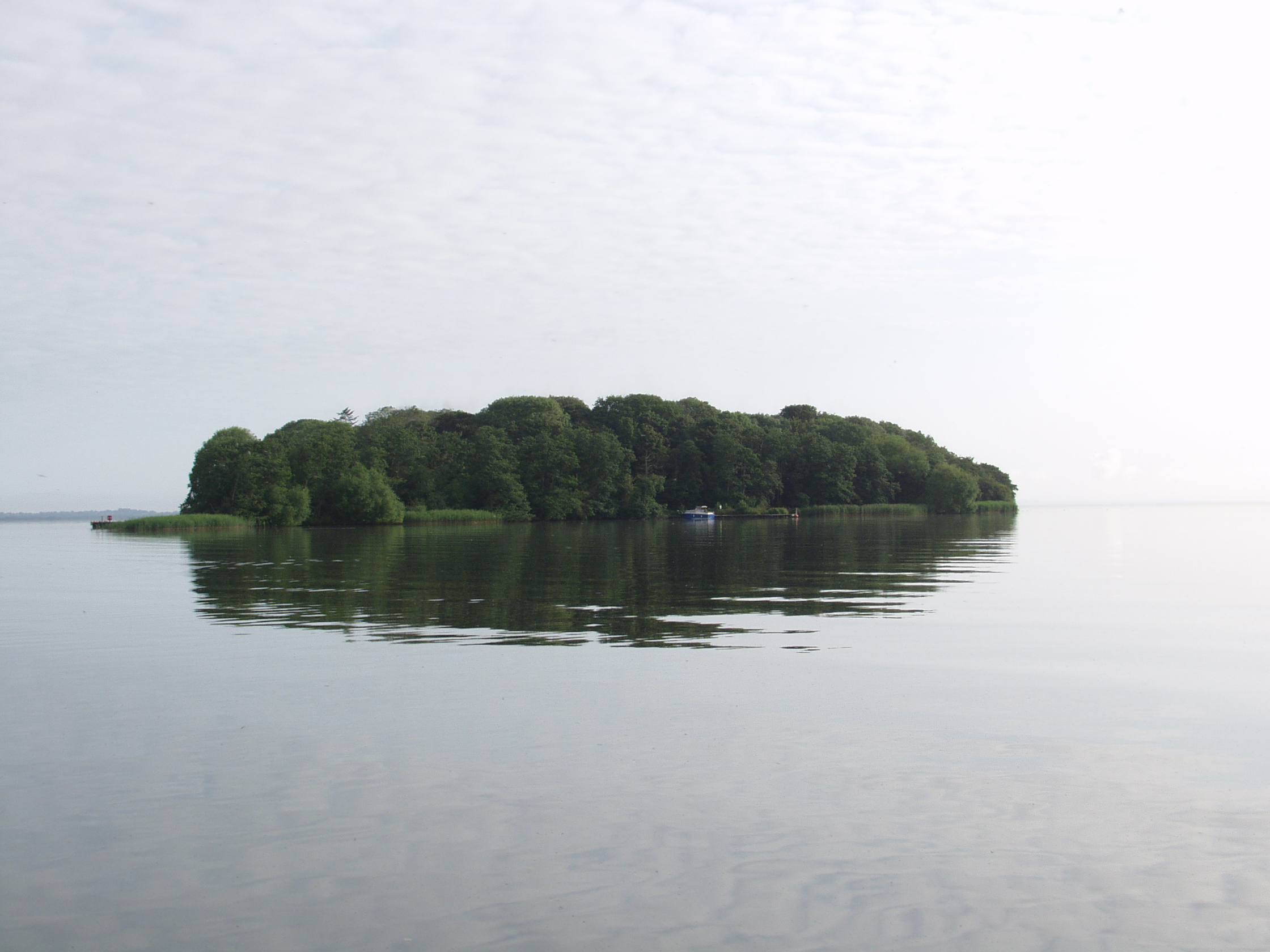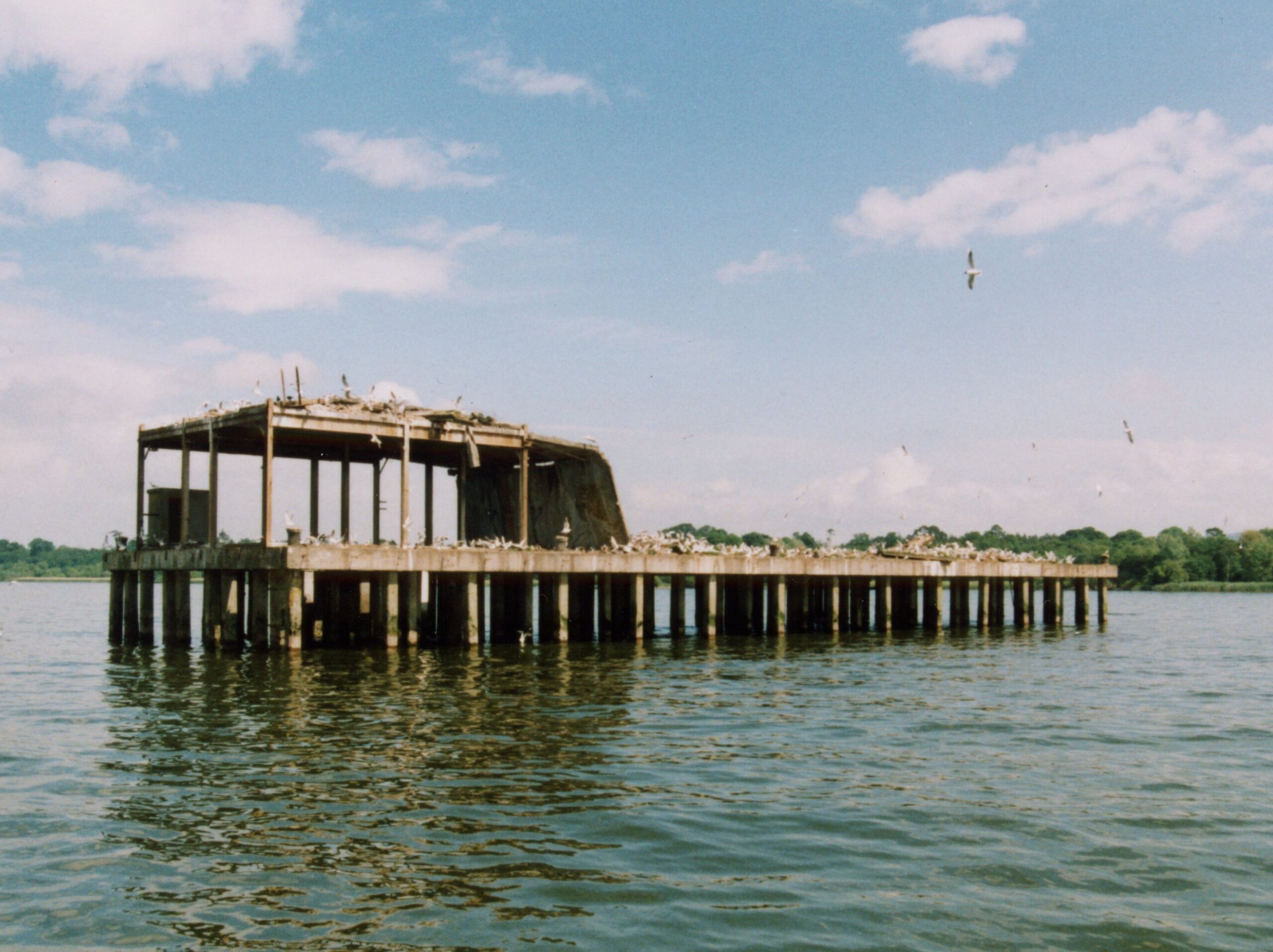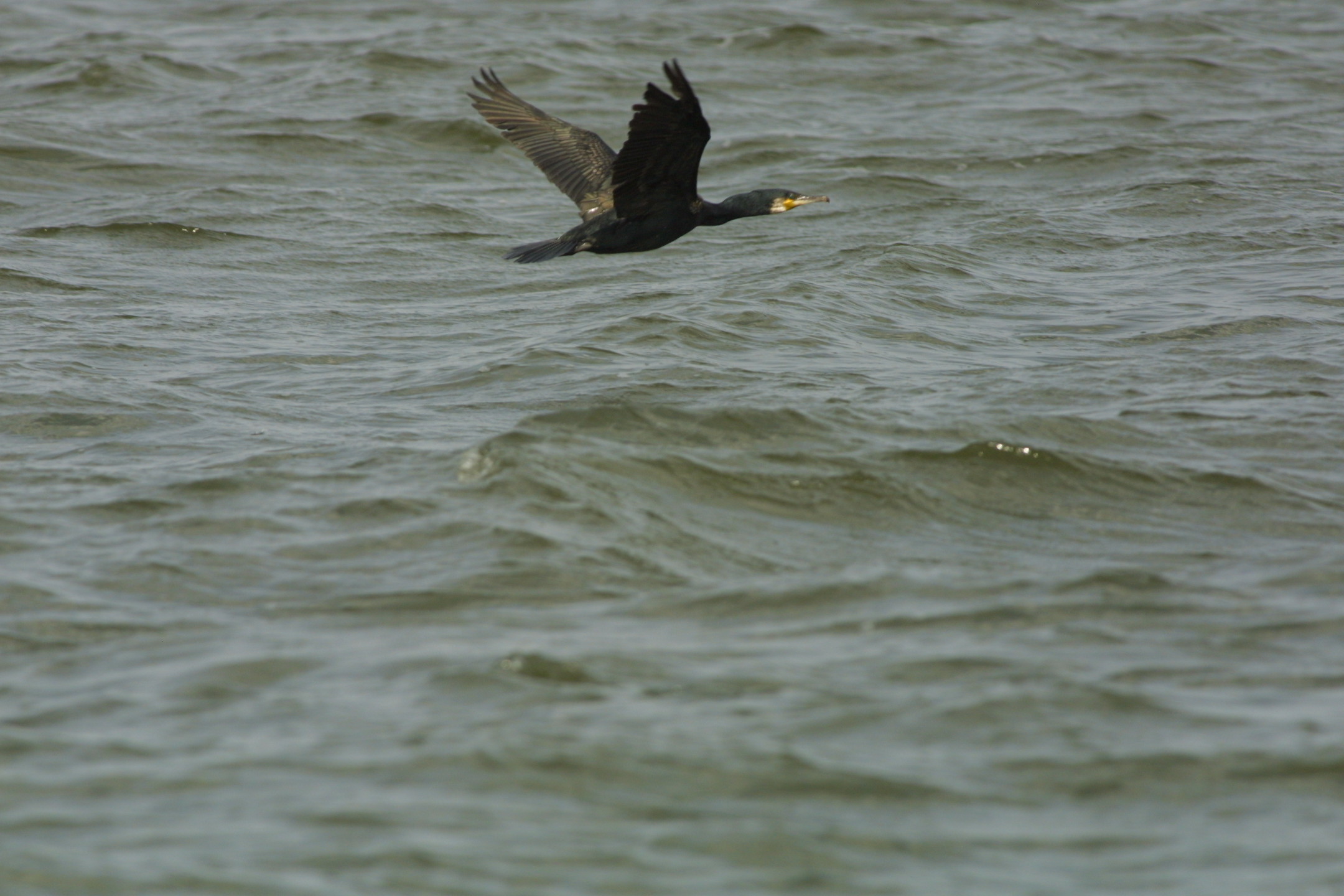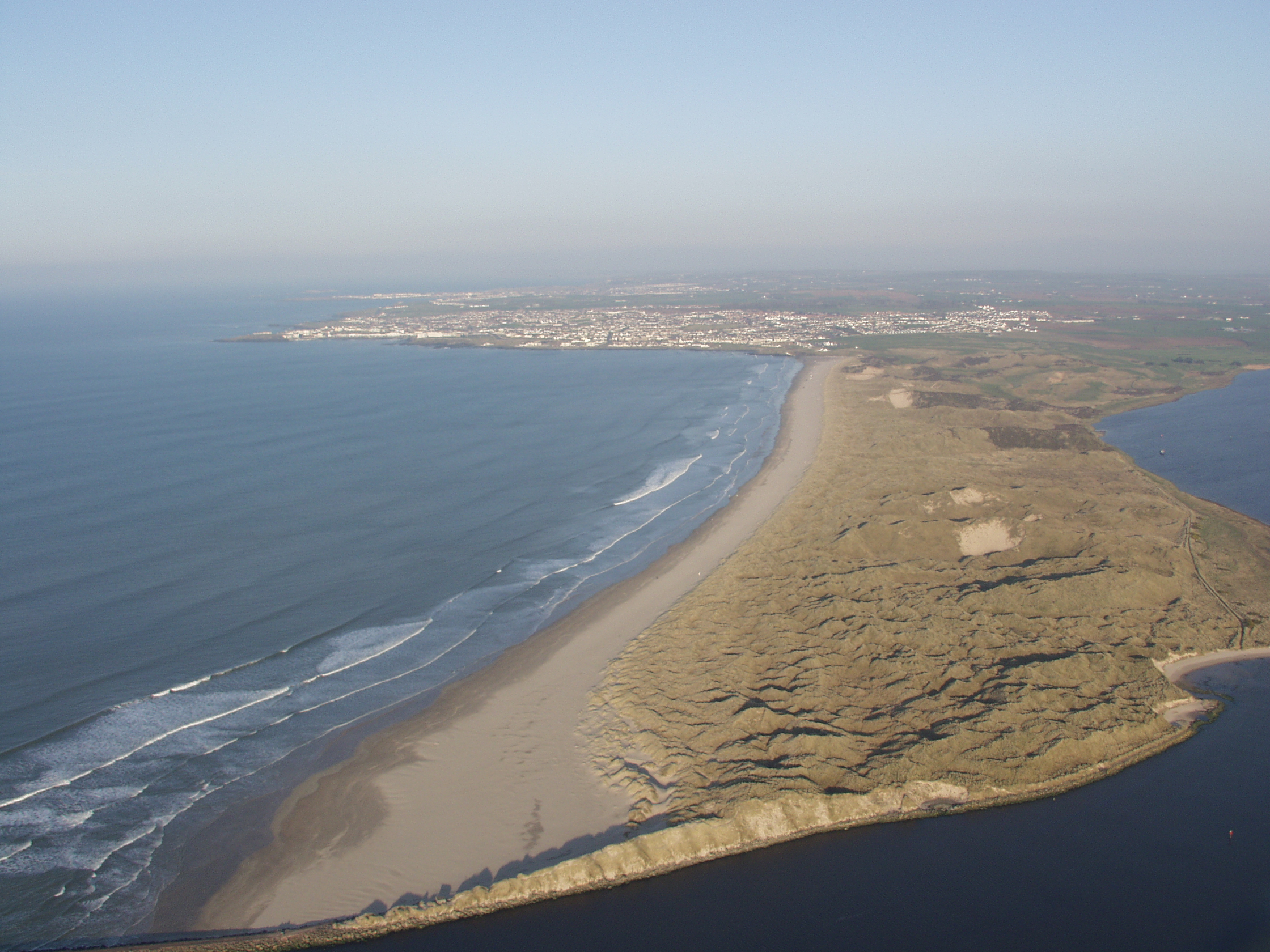Lough Neagh and its rivers have
been recognised as an important environmental site for decades because of the
high environmental quality of the surrounding swamp, fen, wet grassland, wet
woodland, dune and river bank habitat.
In recognition, Lough Neagh and Lough Beg were designated as Areas of
Special Scientific Interest (ASSI), a Special Protection Area and a Ramsar site
in 1992, 1996 and 1976 respectively. The
Bann Estuary was designated as an ASSI in 2001 and has been designated a Special Area of Conservation. These
designations are tools to conserve the rich habitats necessary for the survival
of indigenous plants and animals.
Whilst all the Wetlands are important environmentally, some parts of the
Lough and shore are more sensitive at certain times of the year than
others. Water based visitors, who have
less restricted access to the Lough’s shoreline and who can often approach at
speed or with surprise, should show due care and consideration for plants,
animals and habitats as well as showing courtesy to the local people.
Environmental Code for Watercraft users:
Respect other users and pay heed to the Countryside
Code
Keep
wash and wake to a minimum when passing wildlife, river banks and
shoreline
Use
proper access points, channels, paths and respect access restrictions
Avoid damaging banks, reed beds, salt marsh,
shoreline habitat and avoid disturbing wildlife, particularly in long
grass in the nesting season (March-June) and in refuge areas in the winter
months (December- March)
Seek permission and give prior notice of any
intended visit to islands
Do not pollute or litter and deal with waste in a
responsible manner
Do
not pick or remove any wildlife specimens
If in doubt don’t!
The nature reserves around the
lough have been established both to conserve the natural environment and
provide access for people’s enjoyment.
Further details can be obtained by contacting NIEA on 0300 200 7856, the
Oxford Island Warden’s Office or the Oxford Island Lough Neagh Discovery Centre
on 028 3832 2205.
The following comments briefly describe the nature reserves
of the area and their accessibility by boat.
Oxford Island National Nature Reserve (NIEA) This is a peninsula on the southeast shore
of Lough Neagh bounded by
Kinnego and Derryadd
Bays. The nature reserve
supports a wide range of habitats including wet meadows, reedbeds, woodlands and
shoreline scrub, all of which are typical of the Lough shore. Sheltered bays provide a refuge for large
numbers of wintering wildfowl, especially diving duck that can be seen from
birdwatching hides overlooking the Lough.
Whooper and Bewick’s swans can usually be found grazing on neighbouring
fields. Displaying great-crested grebes,
duckling broods and many other wetland birds can be easily seen in the spring
and summer while the natural grasslands of Kinnego meadows support many
wildflowers and butterflies. Five miles
of footpath pass through these grasslands and also take you to woodlands, ponds
and the Lough shore. The Lough Neagh
Discovery Centre tells the story of the Lough’s history and wildlife through
audio-visual presentations, computers and interactive games.
Approach by boat - The reserve and Discovery Centre are to starboard as you enter Kinnego Bay. The west of Kinnego Bay is a refuge. Whilst there is a small jetty alongside of the Oxford Island Discovery Centre, this should only be used for short visits. The moorings at Kinnego Marina are approximately 1km from the Discovery Centre and are better suited for an overnight stay.
Lough Beg National Nature Reserve (NIEA)
The environment - This reserve, with Church Island as its focal point is located north of Lough Neagh just off the Lower Bann navigation channel. ‘The Strand’ along the west shore is flooded in winter and has never been agriculturally improved. The lough is very important for migratory birds such as black-tailed godwit, green sandpiper, wood sandpiper, green shank and knot. In summer the air is alive with warblers, lapwing, snipe and redshank and the flooding in winter attracts hundreds of wildfowl. There are many rare plants such as Penny Royal and Irish Ladies’ Tresses orchid. The island, formerly known as Inish Toide, has a ruined medieval church, an old graveyard and an 18th century spire and was the site of a pre-Viking monastery.
Approach by boat - It is important to stay within the navigation channel, both for boat safety and to minimise disturbance to the wildlife. There are no facilities and the nearest mooring opportunities are to be found at Toome (to the south of Lough Beg) or at Newferry (to the north of Lough Beg). Visitors should take care as the pools and flooded ground can be treacherous. Quiet observation from on-board is recommended
Grey Heron
Lough Neagh Islands (NIEA)
The environment - The small islands are owned by a variety of landowners including the Shaftesbury Estates of Lough Neagh Ltd. About 80 of the islands are managed as part of the Lough Neagh National Nature Reserve and are best known for the many different species of nesting birds. Continual monitoring reveals that some 500 pairs of mallard, 300 pairs of tufted duck, 500 great crested grebe, 30,000 black headed gulls, 150 common terns and 60 mute swans use the islands to nest. The islands offer particular protection from predators and disturbance. Essential management work and scrub clearance takes place in winter by wardening staff. As many of the islands are small there is considerable competition for nesting space and any human visits to the islands could be unintentionally destructive.
Approach by boat - There are no landing facilities and often the approaches can be difficult with many hidden shallows. Public access to the islands is not permitted to enhance the natural conservation value. Observation from on-board is advised and a respectful distance should be maintained. Anyone wishing to access the islands for scientific reasons must contact NIEA (028 3832 2205).
Peatlands Park
The first of its kind in the British Isles, this extensive area affords the visitor the opportunity to appreciate and understand the richness of the peatland heritage. Four purpose-laid paths guide the visitor around its expansive ‘wilderness’ of natural wealth of flora and fauna. Additional attractions include the narrow gauge railway system and the depicted history of the peat cutting industry. The park includes the reserve of Annagarriff Wood, known for its native tree species and as the only known site for wood ants in Ireland. The reserve survived as a hunting preserve for over 200 years. The birds to be encountered include jays, sparrow hawk, long-eared owls and six species of resident warblers. In winter peregrine falcons and hen harriers hunt for wood pigeon and duck. The plant life is equally varied with several rare and interesting bog species including some carnivorous plants.
Mullenakill, a further reserve within Peatlands Park is an 8000-year-old raised bog. Fed only by rainfall, the acidic bog supports a group of highly specialised plants. Most vital are the Sphagnum mosses, which trap the water that helps to preserve plant remains. With nutrients always scarce, tiny red sundews supplement their diets by catching insects. Colour is abundant with the whites and yellows of summer cotton grasses and asphodels and vivid autumn hues of heathers and cranberries. This area is of high insect value and on occasion lizards can be encountered. Snipe and woodcock are often spotted on this site.
Approach by boat - This park is located on the southern shore inland from the Lough and not immediately accessible by boat. The nearest moorings are to be found several kilometres away at Maghery and Verner’s Bridge off the Blackwater River.
Brookend
The environment - This site is found on the west shore just south of Ardboe. Like most of the shoreline of Lough Neagh, the fields at Brookend were once part of the bed but have since been exposed by successive lowerings since the 1840s. The site is now partially flooded in winter but dries in summer – ideal conditions for many rare and special plants. In spring the area is a focus for cuckoos and curlew and there is a breeding colony of black-headed gulls offshore. In summer the fields are alive with colourful wet grassland plants such as ragged robin, bog cotton, greater birds-foot trefoil and marsh cinquefoil. Rare plants such as cowbane and flowering rush can also be found. Warblers find the site attractive and fill the summer air with song. Colourful damselflies and dragonflies can be seen around pond margins.
Approach by boat - There are no facilities and the nearest mooring is to be found at Ardboe, or Curran Quay, all of which are substantial walking distance away. The approaches are shallow and therefore craft are discouraged from getting close.
Randalstown Forest and Farr’s Bay
The environment - Located in the northeastern corner of the lough are two small adjacent nature reserves of species rich fen and carr, which have developed on a succession of old shorelines (produced by the lowering of the lough). They adjoin the northeast Lough Neagh Wildfowl Refuge, and bird-hides provide an excellent opportunity to observe the wetland birds typical of Lough Neagh. The absence of grazing cattle has favoured the woodlands. The drier parts are dominated by ash, hawthorn and blackthorn whilst the damper areas are notable by alder and willow. Rare plants encountered include large bitter cress, lanceolate water plantain and elongated sedge. Bird watching from the hide in winter provides an opportunity to see mallard, teal and gadwall, whilst summer great crested grebes, mute swans and nesting coot can be seen.
Approach by boat - There are no landing facilities at the reserve. Antrim Loughshore Park and Antrim Boat Club to the south or Cranfield to the west offer moorings but are several km away from the reserve by road. Access is by permit only. Onboard observation from a respectful distance is recommended
Rea’s Wood
The environment - Stretching for one mile along the shores of Lough Neagh on the northeast corner this reserve is a fine example of wet fen woodland dominated by alder, willow and birch, which has developed on the old shoreline. The vegetation provides a luxuriant habitat for rare plants (marsh marigold, yellow flags and summer snowflake) and invertebrates (slugs snails, hoverflies and beetles). The chorus of spring birdsong (robin, wren and blackbird, chiff-chaff, blackcap and willow warbler) is impressive. There is a footpath and access is unrestricted.
Approach by boat - The nearest mooring is to be found at Antrim where the reserve can be accessed by foot from the Loughshore car park. The small offshore Kettlebottom Island has no access or landing and watercraft users are recommended to maintain a respectful distance.
Portmore Lough
The Environment - This is an RSPB reserve located in the south-eastern corner of the lough. The shallow lough provides excellent managed conditions for attracting visiting waterbirds and the neighbouring area is a focus for perching birds (passerines).
Approach by boat - The nearest and recently developed mooring is to be found a few kilometres away at Gawley’s Gate or alternatively Sandy Bay Marina offer an opportunity for mooring. Prearranged road transport is recommended and it is advisable to notify the warden of your visit (028 9265 1936).
Rams Island
Islands
The largest islands on Lough Neagh may prove attractive for a potential visit; Coney Island has one jetty and is located in the southwest corner of the Lough near Maghery Country Park. The jetty offers an opportunity to moor, tour the island and use the small attractive picnic area. The resident warden will be happy to take you on a guided tour of the island’s extensive flora and fauna. It is advisable to contact the warden beforehand (028 38851785).
Rams Island (above) belongs to The Lord O’Neill, and is leased to the River Bann and Lough Neagh Association Co.
www.ramsisland.org

Torpedo platform
The World War II torpedo-testing platform is an interesting structure just off the northeast shore of the Lough. The platform is falling into disrepair therefore mooring or climbing on the structure is not recommended and potentially dangerous. The site provides an important refuge for nesting terns and it is requested that all craft give wide berth, especially between March and July, to avoid disturbing the breeding colony.

The Flats
The flats in the Lough are areas of shallows that are hazardous to craft. However, they are extensive feeding sites for many of the birds and so a wide berth should be given to ensure maximum safety and minimum disturbance.
Refuges in shooting season
The refuges located around the Lough are intended as a haven for birds, particularly in the shooting season (September to January inclusively). Watercraft should avoid creating disturbance in refuges at all times of the year.
Shooting sconces
Shooting sconces are small hides built in the water around the fringes of the Lough that allow wildfowlers to shoot over a larger area. They are normally located close to shore and so deep draft craft are advised to stay back. They are private property, have been permitted by Shaftesbury Estates of Lough Neagh Ltd., and should not be disturbed. They can be occupied by wildfowlers during the shooting season. Craft should stay at least 250m clear for safety.

Other islands and shore sites
Apart from the larger islands and those within the protection of the National Nature Reserve or Lough Neagh Islands Refuge, other islands and considerable stretches of shore may be part of the licensed shooting reach of the wildfowlers. Again depth often makes these areas inaccessible to all but the shallowest draft craft, but exercise caution as these may be used for wildfowling. A recommended 250m berth should be given.
On the open lough
Many of the birds encountered on the Lough will form rafts. These are collections of large numbers of resting (or feeding) birds, often sufficiently distant from shore to avoid the reach of guns, but much more liable to be in the path of boats. It is advised to provide sufficient distance so as not to disturb these birds.
Rivers
It is inadvisable to leave the main navigation channels or bank moor whilst in the main rivers. The majority of the fauna can be seen from your boat and this is likely to include kingfishers, herons and otters as well as the usual array of birds and insects.
Bann Estuary
The sand dunes, particularly on the Portstewart side are worth a visit if you are interested in the species rich habitat containing flora such as Lady’s bedstraw, Wild pansy and Fairy Flax. The site, which is an Area of Special Scientific Interest, supports a range of breeding and wintering birds. Breeding species include Shellduck, Redshank, snipe and Lapwing.
Approach by boat - It is inadvisable for larger craft to leave the navigation channel in the estuary. With care and due consideration to the natural environment, small craft can gain access to the shore.

Lough Neagh Fly
Chironomid Midge is the scientific family name for the Lough Neagh Fly. They are small, delicate insects that are somewhat mosquito-like in appearance, but they lack scales on the wings, and do not have a long proboscis (they do not bite).
Lough Neagh Flies often occur in huge swarms, usually in late spring and early summer and the humming of such swarms can often be heard from a considerable distance.
Although they are somewhat of a nuisance to boaters they only live in the adult stage for two to three days, mating, laying eggs and then dying. They are a very important part of the food chain of Lough Neagh and spend most of their lives in the mud at the bottom of the Lough.
The Chironomid Midge is not unique to Lough Neagh and occurs in other Loughs throughout Ireland and the rest of the world. They are not prevalent on the rivers of the system and seem only to swarm close to the shores of Lough Neagh or on the Islands. They are attracted by lights and light colours and in huge numbers can sometimes turn white buildings and boats black. They are best left alone and are easily washed off with water.
Life cycle of the Lough Neagh Fly (chironomid midge).

created with
WordPress Builder .